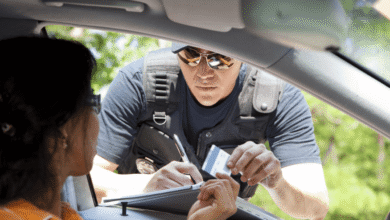How to Prepare Your Plumbing for Winter

As winter approaches, preparing your home’s plumbing system is essential to prevent damage caused by freezing temperatures. Taking the necessary steps to winterize your plumbing can save you from costly repairs and ensure your home remains comfortable throughout the colder months. We will explore effective ways to prepare your plumbing for winter, covering aspects such as insulating pipes, maintaining water heaters, and protecting outdoor faucets and hoses. Following these guidelines, homeowners can safeguard their plumbing systems and enjoy a worry-free winter season. For those seeking professional advice, our South Portland office is available to provide guidance and support.
Insulating Pipes
Identifying Vulnerable Pipes
The first step in preparing your plumbing for winter is identifying pipes vulnerable to freezing. Pipes in unheated areas such as basements, attics, garages, and crawl spaces are particularly susceptible. Additionally, pipes running along exterior walls or cabinets under sinks can be \\at risk. Once you have identified these pipes, you can take steps to protect them from freezing temperatures.
Using Pipe Insulation
Insulating vulnerable pipes is an effective way to prevent them from freezing. Foam pipe insulation is widely available and easy to install. Measure the length of the pipes you need to insulate and cut the insulation to fit. Secure the insulation using adhesive tape or cable ties, ensuring no gaps or exposed sections. Consider using heat tape or heating cables with pipe insulation for added protection. These products can provide an extra layer of warmth and further reduce the risk of freezing.
Read also: DIY vs. Professional Drain Cleaning: Which Is Right for You?
Maintaining Water Heaters
Checking the Temperature
Water heaters are critical for providing hot water during winter, so ensuring they function correctly is essential. Start by checking the temperature setting on your water heater. The recommended setting is usually around 120 degrees Fahrenheit. Setting the temperature too high can increase energy consumption and the risk of scalding, while setting it too low may not provide sufficient hot water.
Draining the Water Heater
Sediment buildup in the water heater tank can reduce its efficiency and lifespan. To maintain optimal performance, drain the water heater before winter. Turn off the power or gas supply to the water heater, then attach a hose to the drain valve at the bottom of the tank. Open the valve and let the water flow out until it runs clear. This process helps remove sediment and ensures your water heater operates efficiently throughout the winter.
Protecting Outdoor Faucets and Hoses
Disconnecting and Draining Hoses
Outdoor faucets and hoses are particularly vulnerable to freezing temperatures. Before winter sets in, disconnect all garden hoses from outdoor faucets. Allow any water left in the hoses to drain out completely. Store the hoses in a dry, indoor location to prevent them from freezing and cracking.
Installing Faucet Covers
To protect outdoor faucets, install insulated faucet covers. These covers provide an extra insulation layer and help prevent the faucets from freezing. Faucet covers are easy to install and can be secured with a simple strap or tie. For added protection, you can also consider installing frost-free fixtures to prevent freezing by draining water away from the faucet when turned off.
Preparing Indoor Plumbing
Keeping Cabinet Doors Open
Pipes under sinks and in cabinets can be at risk of freezing, especially if the cabinets are along exterior walls. To help warm air circulate these pipes, keep cabinet doors open during extremely cold weather. This simple step can help prevent the pipes from freezing by allowing heat from the rest of the house to reach them.
Letting Faucets Drip
Allowing faucets to drip slightly can help prevent pipes from freezing. When water is allowed to move, it is less likely to freeze. Choose a faucet farthest from the main water supply line and let it drip slowly during extremely cold temperatures. This small water flow can help relieve pressure in the pipes and reduce the risk of a burst pipe.
Addressing Outdoor Plumbing Systems
Sprinkler Systems
If you have an irrigation or sprinkler system, it’s crucial to winterize it before the first freeze. Turn off the water supply to the system and drain any remaining water from the pipes and valves. Most sprinkler systems have a manual drain valve that can be opened to allow water to escape. Additionally, you may need to use compressed air to blow out any remaining water from the lines. Properly winterizing your sprinkler system helps prevent damage to the pipes and components.
Swimming Pools and Outdoor Spas
For homes with swimming pools or outdoor spas, winterization is essential to prevent damage from freezing water. Follow the manufacturer’s guidelines for winterizing your pool or spa, which typically involve lowering the water level, adding winterizing chemicals, and covering the pool or spa with a protective cover. Draining and properly storing pool equipment, such as pumps and filters, can also help prevent damage.
Monitoring and Maintenance
Regular Inspections
Regular inspections throughout the winter months are essential to ensure that your plumbing system remains in good condition. Check for any signs of freezing, such as reduced water flow or frost on pipes. If you notice any issues, address them promptly to prevent further damage. Keeping an eye on your plumbing system can help you catch problems early and avoid costly repairs.
Emergency Preparation
Despite your best efforts, a pipe could freeze or burst. Being prepared for such emergencies can help minimize damage. Know the location of your main water shut-off valve and ensure that everyone in your household knows how to turn it off in an emergency. Having the contact information for a reliable plumber on hand can also be helpful if you need professional assistance quickly.
Conclusion
Preparing your plumbing for winter involves several important steps, including insulating pipes, maintaining water heaters, protecting outdoor faucets and hoses, and addressing outdoor plumbing systems. By taking these precautions, homeowners can prevent freezing and bursting pipes, ensuring a smooth and worry-free winter. Regular monitoring and maintenance throughout the cold season further safeguard your plumbing system. Investing time and effort in these preparations can protect your home from water damage and enjoy a warm and comfortable winter.




